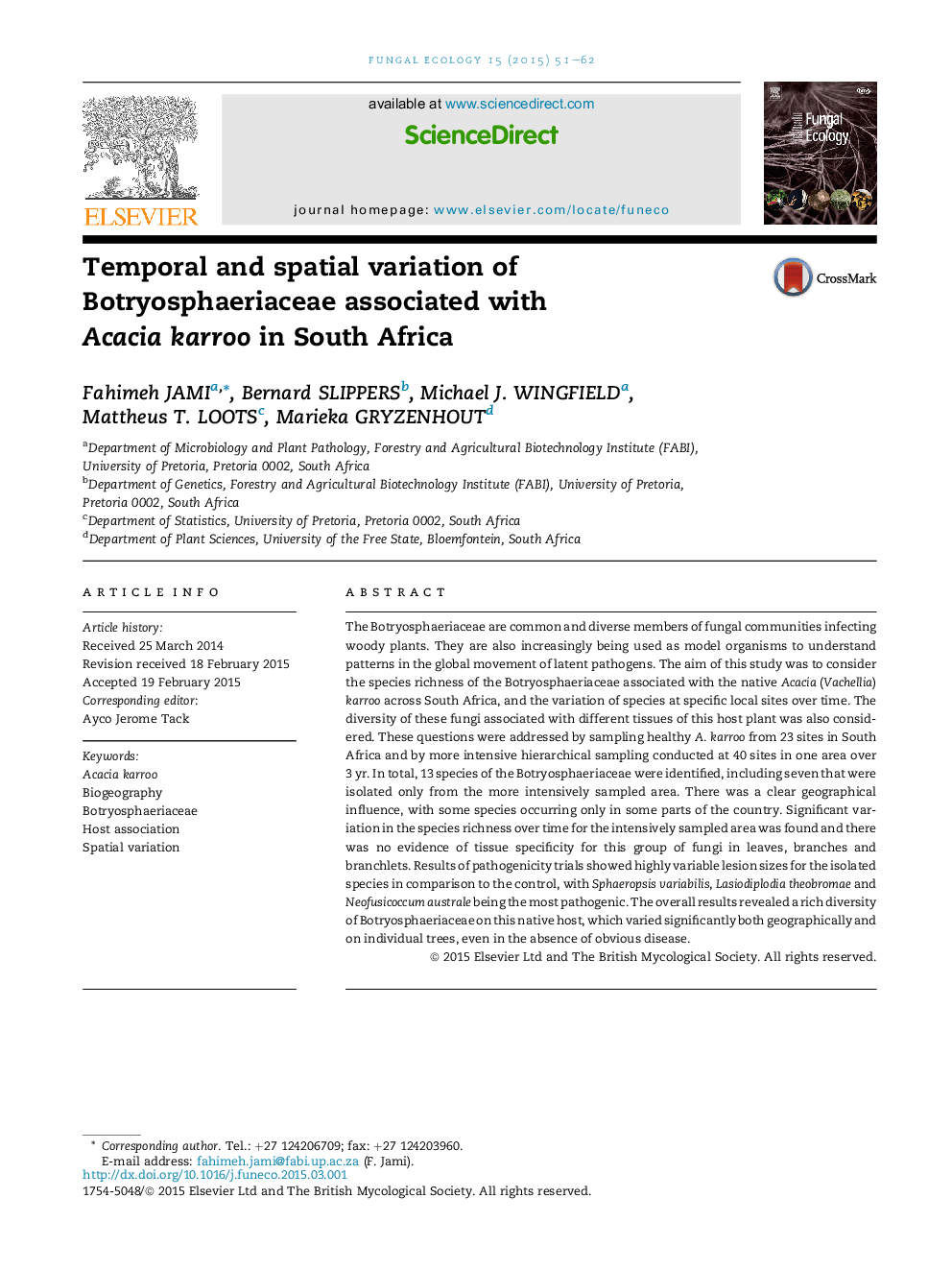| Article ID | Journal | Published Year | Pages | File Type |
|---|---|---|---|---|
| 2053604 | Fungal Ecology | 2015 | 12 Pages |
•Sixteen species of Botryosphaeriaceae were identified on the native Acacia karroo in South Africa.•Species richness varied significantly both geographically and on individual trees.•No evidence of tissue specificity for Botryosphaeriaceae for leaves, branches and branchlets.•Significant variation was observed in the species richness over time.
The Botryosphaeriaceae are common and diverse members of fungal communities infecting woody plants. They are also increasingly being used as model organisms to understand patterns in the global movement of latent pathogens. The aim of this study was to consider the species richness of the Botryosphaeriaceae associated with the native Acacia (Vachellia) karroo across South Africa, and the variation of species at specific local sites over time. The diversity of these fungi associated with different tissues of this host plant was also considered. These questions were addressed by sampling healthy A. karroo from 23 sites in South Africa and by more intensive hierarchical sampling conducted at 40 sites in one area over 3 yr. In total, 13 species of the Botryosphaeriaceae were identified, including seven that were isolated only from the more intensively sampled area. There was a clear geographical influence, with some species occurring only in some parts of the country. Significant variation in the species richness over time for the intensively sampled area was found and there was no evidence of tissue specificity for this group of fungi in leaves, branches and branchlets. Results of pathogenicity trials showed highly variable lesion sizes for the isolated species in comparison to the control, with Sphaeropsis variabilis, Lasiodiplodia theobromae and Neofusicoccum australe being the most pathogenic. The overall results revealed a rich diversity of Botryosphaeriaceae on this native host, which varied significantly both geographically and on individual trees, even in the absence of obvious disease.
